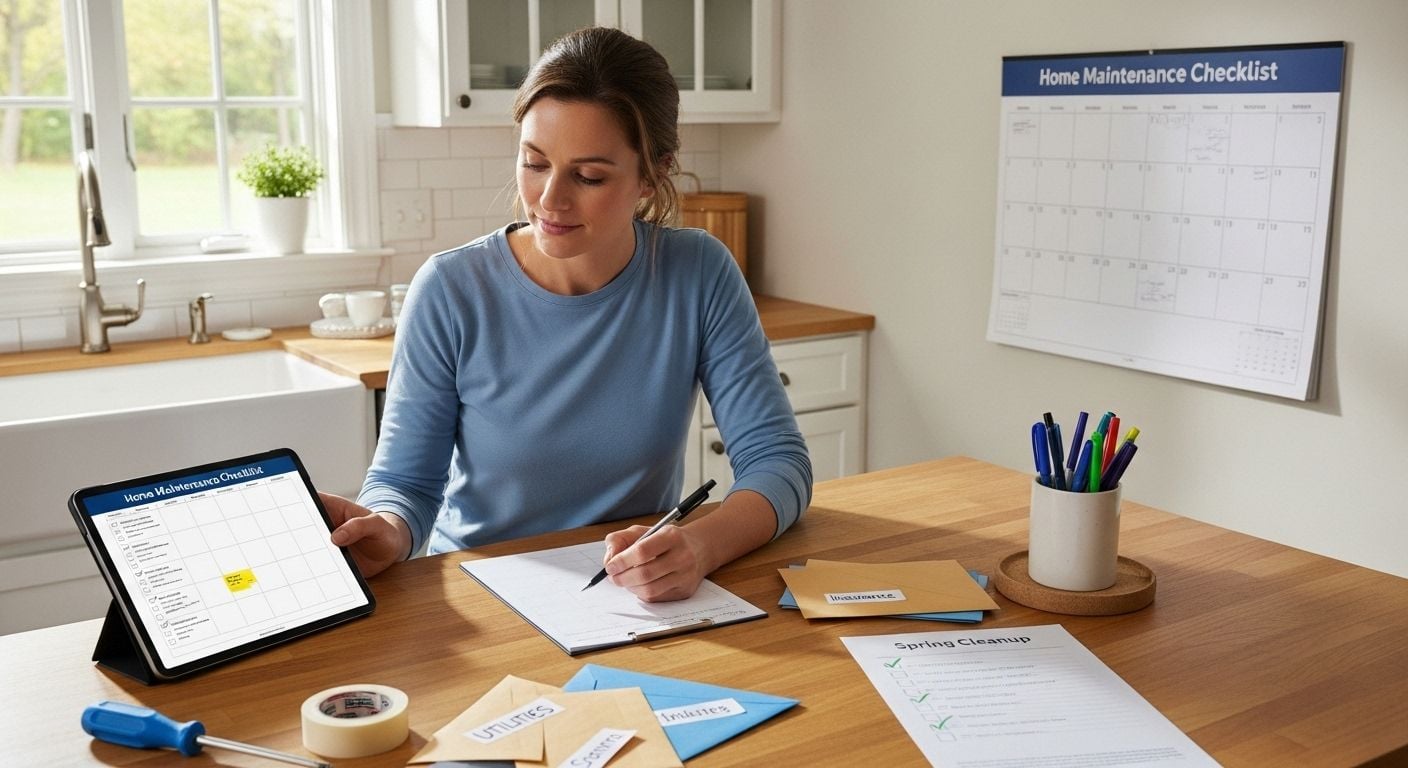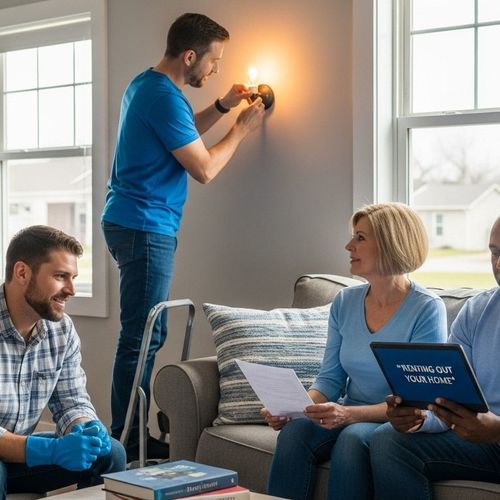Essential Home Maintenance Checklist for Every Homeowner
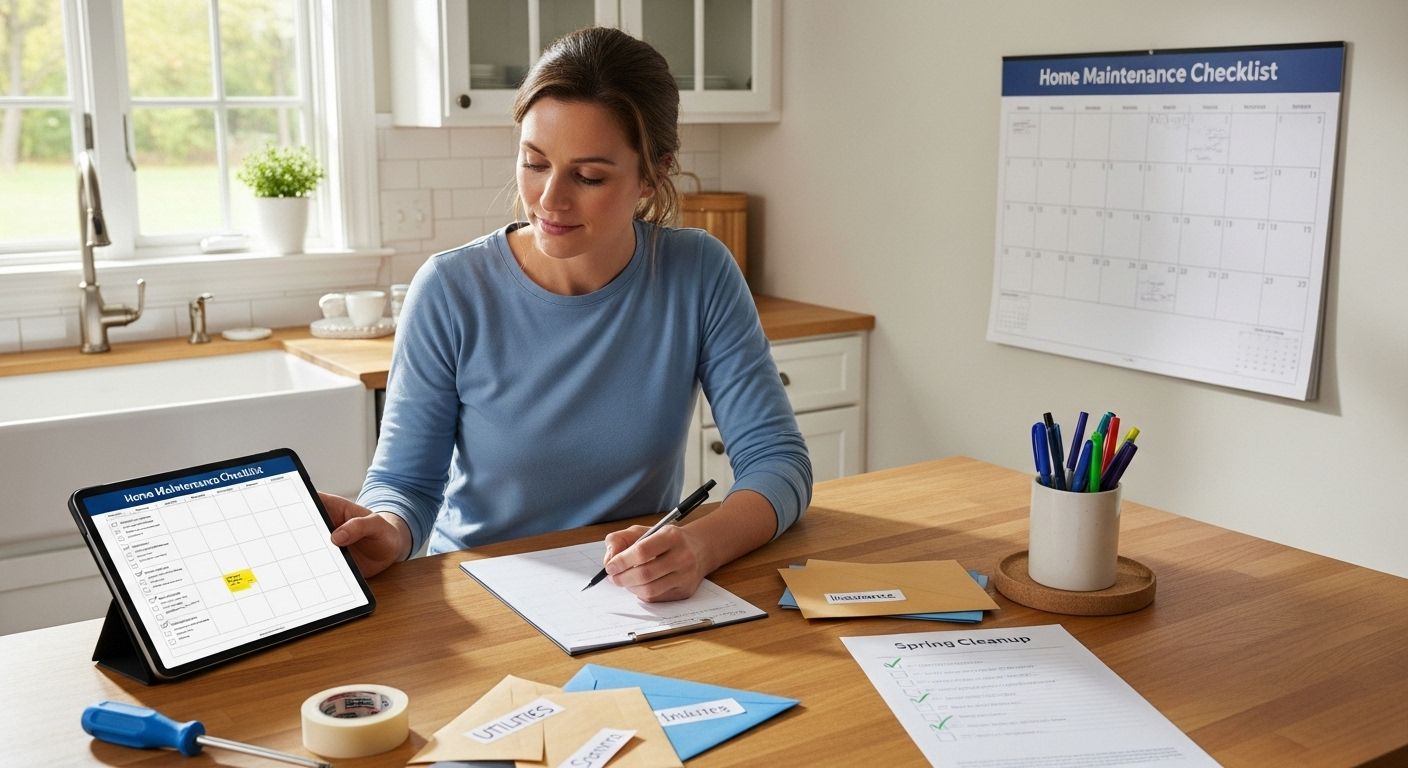
Home maintenance is more than just patching up a leaky faucet or mowing the lawn. Get this. The average homeowner should set aside about 1 percent of their home’s value every year just for maintenance and repairs. Most people think this is just over-cautious spending. The truth is, being proactive with home care not only saves cash in the long run but can actually protect your home’s value and prevent endless headaches down the line.
Table of Contents
- Step 1: Create A Yearly Home Maintenance Schedule
- Step 2: Inspect Your Home’s Exterior And Roof
- Step 3: Check And Service HVAC Systems
- Step 4: Assess Plumbing And Electrical Systems
- Step 5: Finalize Home Improvements And Updates
- Step 6: Document Maintenance And Repairs
Quick Summary
| Key Point | Explanation |
|---|---|
| 1. Create a yearly maintenance schedule | Developing a calendar helps track inspections and tasks to prevent costly repairs and manage your home effectively. |
| 2. Conduct regular exterior and roof inspections | Inspecting these surfaces detects potential issues early, protecting your home from environmental damage and costly repairs. |
| 3. Service HVAC systems biannually | Schedule professional check-ups before heating and cooling seasons to ensure efficiency and prevent breakdowns in your HVAC system. |
| 4. Assess plumbing and electrical systems regularly | Regular inspections reveal hidden issues and ensure systems function safely, minimizing the risk of emergencies. |
| 5. Document all maintenance and repairs | Keeping detailed records of all work performed helps track history, supports future decision-making, and increases property value when selling. |
| Pro Tip: Staying consistent with maintenance not only protects your investment but also boosts resale value when it’s time to sell in Oakland County’s competitive market. | |
Step 1: Create a Yearly Home Maintenance Schedule
Maintaining a home requires strategic planning and consistent effort. A comprehensive yearly home maintenance schedule helps homeowners proactively manage their property, prevent costly repairs, and extend the lifespan of critical home systems. By developing a structured approach to home maintenance, you transform reactive problem solving into strategic property management.
Starting your maintenance plan begins with creating a detailed calendar that tracks essential inspections, seasonal tasks, and routine checkups. According to Utah State University Extension, homeowners should budget approximately 1% of their home’s value annually for maintenance and repairs. This financial planning helps ensure you have resources available when maintenance needs arise.
Your yearly maintenance schedule should include specific timeframes for critical tasks. Break down maintenance activities by season to ensure comprehensive coverage. For example, schedule HVAC system check-ups during spring and fall, perform exterior painting and repairs during summer months, and prepare your home for winter before cold weather arrives. Consider creating a digital or physical maintenance tracking document that allows you to record completed tasks, upcoming scheduled maintenance, and track potential repair needs.
Key elements to include in your yearly maintenance schedule involve systematic reviews of major home systems. This includes electrical systems, plumbing, heating and cooling equipment, roof condition, foundation integrity, and exterior surfaces. Document each inspection date, notes from the assessment, and any recommended follow-up actions. By maintaining a detailed record, you create a valuable historical log of your home’s maintenance that can help with future repairs, potential sales, and understanding your property’s long-term care requirements.
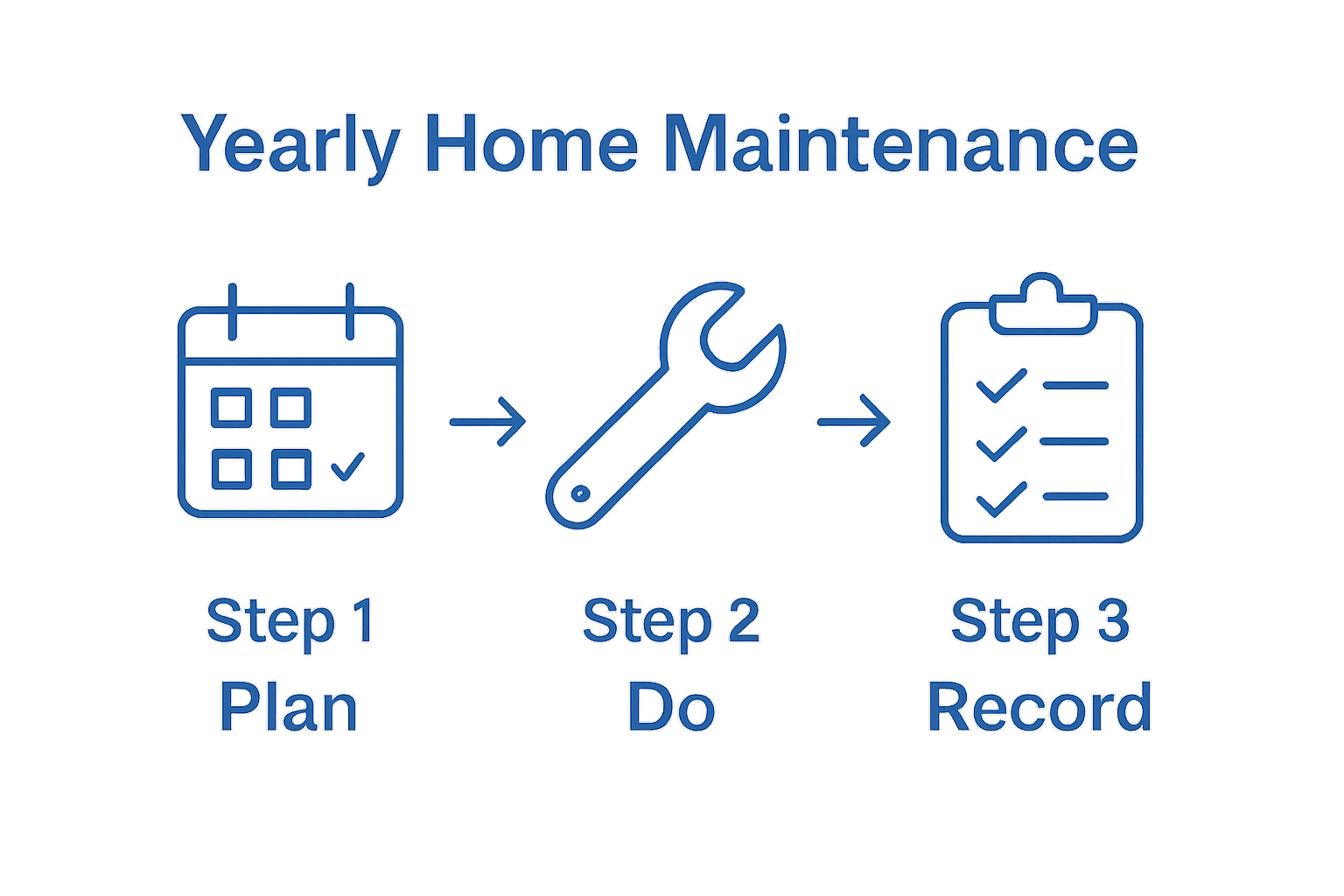
To make your maintenance schedule more effective, invest in a dedicated planner or digital tracking tool specifically designed for home maintenance. Many smartphone apps and online platforms offer customizable templates that can help you organize and track your home care activities efficiently. Remember that flexibility is key your maintenance plan should be a living document that adapts to your home’s specific needs and any unexpected repair requirements.
Step 2: Inspect Your Home’s Exterior and Roof
Protecting your home starts with a thorough exterior and roof inspection. These critical surfaces shield your property from environmental damage and play a crucial role in maintaining your home’s structural integrity and energy efficiency. According to the U.S. Department of Energy, regular inspections can prevent costly repairs and help maintain optimal home performance.
Begin your exterior inspection by walking around your entire property during daylight hours, carefully examining each surface for signs of wear or potential damage. Look for subtle indicators of structural stress, such as hairline cracks in foundation walls, loose or damaged siding, peeling paint, or areas where moisture might penetrate. Pay special attention to corners, edges, and areas where different building materials meet, as these regions are often most vulnerable to environmental stress.
The following table summarizes the essential tools and recommended uses for conducting a thorough exterior and roof inspection, as described in the article.
| Tool/Resource | Recommended Use | Notes |
|---|---|---|
| Sturdy Ladder | Access roof edges, gutters, and high exterior surfaces | Ensure ladder is stable and secure |
| Binoculars | Inspect roof from the ground for shingle or flashing issues | Helpful for spotting distant damage |
| Work Gloves | Protect hands during inspection and minor handling | Use when handling debris or climbing |
| Notepad | Record findings and maintenance notes | Track inspection results for reference |
| Camera | Document problem areas or changes over time | Use both wide and close-up photos |
| Professional Inspector | Assess hard-to-reach or dangerous areas | Recommended for thorough evaluations |
| Pro Tip: Pair DIY inspections with professional evaluations—catching issues early saves money and preserves your home’s long-term value in Oakland County. | ||
Roof inspections require careful observation and potentially professional assistance. While ground-level examination can reveal significant issues, some problems require closer investigation. Use binoculars to inspect shingles for curling, missing pieces, or visible damage. Check for sagging areas, damaged flashing around chimneys and vents, and any signs of water intrusion. Metal roofing, asphalt shingles, and tile roofs each have unique maintenance requirements, so familiarize yourself with your specific roofing material’s recommended care protocol.
Equip yourself with the right tools for a comprehensive inspection. Recommended items include a sturdy ladder, binoculars, work gloves, a notepad for documenting findings, and a camera to record potential problem areas. Take detailed photographs of any concerning spots to track changes over time or share with professional contractors if needed. When examining hard-to-reach areas, consider hiring a professional inspector who can safely assess potentially dangerous locations and provide expert insights into your home’s exterior condition.
Verify your inspection’s completeness by creating a detailed report documenting each observed condition. Note the location, extent, and potential severity of any discovered issues. This documentation serves as a valuable reference for future maintenance and can help you prioritize repairs.
Remember that early detection of exterior and roof problems can save thousands in potential repair costs, making this inspection a critical component of responsible homeownership.
Step 3: Check and Service HVAC Systems
Your home’s heating, ventilation, and air conditioning (HVAC) system represents a critical investment that requires consistent maintenance to ensure optimal performance and longevity. According to ENERGY STAR, regular system check-ups can significantly improve efficiency and prevent unexpected breakdowns.
Preparing for a comprehensive HVAC system check involves gathering the right tools and understanding the complexity of your specific system. Professional maintenance is recommended at least twice annually, typically before the heating and cooling seasons. While some homeowners feel confident performing basic maintenance, complex diagnostic work should be handled by certified HVAC technicians who can identify potential issues before they become expensive repairs.
Start with a thorough visual inspection of your HVAC equipment. Check for any visible signs of wear, such as rust, corrosion, or unusual dust accumulation around vents and system components. Examine air filters monthly, replacing them every three months or more frequently if you have pets or live in a dust-prone environment. Clean filters improve air quality and system efficiency, reducing strain on mechanical components and potentially lowering energy costs.
Most HVAC maintenance requires specialized knowledge and tools. A professional technician will perform critical tasks like checking electrical connections, lubricating moving parts, testing system controls, and measuring refrigerant levels. They can also inspect ductwork for potential leaks, clean condenser and evaporator coils, and ensure your system operates at peak performance. Homeowners should budget for these professional inspections, understanding that the cost of maintenance is significantly lower than emergency repairs or complete system replacement.
Verify your HVAC maintenance by requesting a detailed report from your technician. This documentation should include system performance measurements, identified potential issues, completed maintenance tasks, and recommendations for future care. Keep this report with your home maintenance records, creating a comprehensive history of your HVAC system’s performance and care. By approaching HVAC maintenance systematically, you protect your home’s comfort systems and potentially extend their operational lifespan by several years.
Step 4: Assess Plumbing and Electrical Systems
Home maintenance requires a proactive approach to protecting two of your property’s most critical systems: plumbing and electrical infrastructure. These complex networks demand careful, systematic inspection to prevent potential disasters that could compromise your home’s safety and functionality. According to North Carolina State University Extension, regular system assessments can help homeowners identify and address potential issues before they escalate into costly repairs.
Electrical system inspections begin with a comprehensive visual examination of your home’s accessible electrical components. Check circuit breaker panels for signs of corrosion, loose connections, or unusual discoloration. Test all ground fault circuit interrupter (GFCI) outlets in areas with potential water exposure, such as kitchens, bathrooms, and exterior spaces. These outlets are critical safety devices that protect against electrical shock, and they should be tested monthly by pressing the test and reset buttons to ensure proper functionality.
Plumbing assessments require a meticulous approach to detecting potential weaknesses in your home’s water and drainage systems. Inspect visible pipes under sinks, in basements, and crawl spaces for signs of leaks, corrosion, or water damage. Look for subtle indicators like water stains, mold growth, or musty odors that might suggest hidden plumbing issues. Pay special attention to areas around toilets, water heaters, and major appliance connections, as these locations are most prone to developing leaks or structural vulnerabilities.
Utilize specialized tools to enhance your inspection process. A non-contact voltage tester can help identify potential electrical problems without direct contact, while a moisture meter can detect hidden water damage in walls and floors. Consider investing in a small inspection camera that can help you examine hard-to-reach plumbing connections and electrical pathways. While some homeowners feel comfortable performing basic inspections, complex electrical or plumbing issues should always be evaluated by licensed professionals who can provide comprehensive diagnostics and recommended repairs.
Verify the completeness of your assessment by documenting all findings in a detailed report. Photograph any areas of concern, note the location and potential severity of identified issues, and create a follow-up plan for addressing potential problems. This documentation serves as a critical reference for future maintenance and can help you track the long-term health of your home’s essential systems.
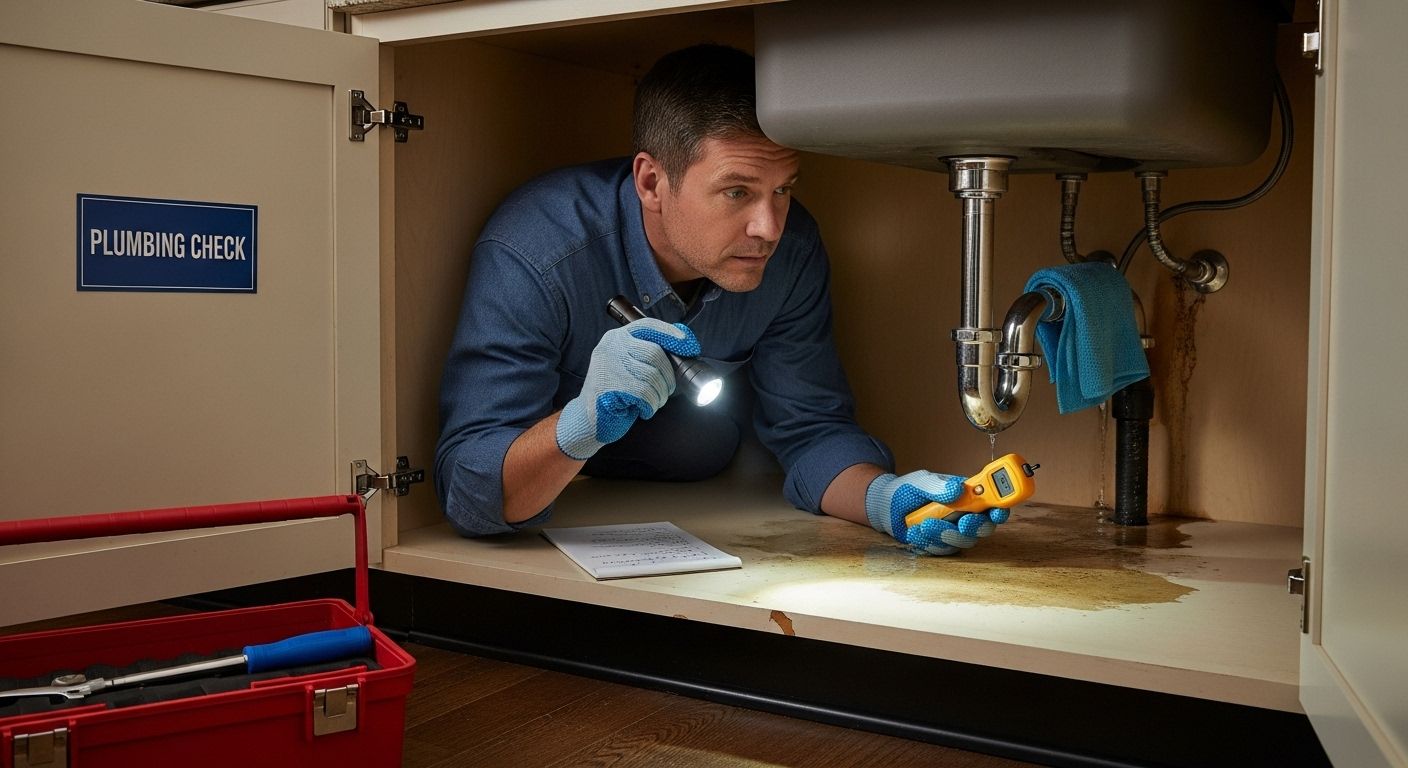
Step 5: Finalize Home Improvements and Updates
Completely implementing and documenting home improvements represents the crucial final stage of comprehensive home maintenance. This step transforms individual repair and upgrade efforts into a cohesive strategy for protecting and enhancing your property’s value. According to the University of Georgia Cooperative Extension, proper documentation and verification of completed projects are essential to long-term home management.
Thorough documentation begins with creating a comprehensive project portfolio for every improvement or repair completed during your maintenance cycle. This means gathering all relevant paperwork, including receipts, contractor invoices, warranty information, and before-and-after photographs. Digital storage solutions work exceptionally well for organizing these records, allowing easy access and backup. If you’re planning to explore home selling strategies in Oakland County, these detailed improvement records can significantly boost your property’s marketability and perceived value.
Verify the quality and completeness of each home improvement project by conducting a systematic final review. Walk through each updated area, checking that all work meets your initial expectations and professional standards. Test newly installed or repaired systems thoroughly, examining functionality, aesthetic finish, and structural integrity. Pay special attention to how different improvements interact with existing home systems, ensuring that new updates complement rather than compromise your home’s overall performance.
Financial tracking represents another critical aspect of finalizing home improvements. Maintain a detailed spreadsheet documenting the total investment in each project, including materials, labor, and any associated professional consultation fees. Compare actual expenses against your initial budget, noting any significant variations and understanding the reasons behind cost differences. This financial documentation provides valuable insights for future maintenance planning and helps you make more informed decisions about upcoming home improvement investments.
Conduct a final comprehensive review that synthesizes all maintenance and improvement efforts. This holistic assessment should evaluate how individual projects contribute to your home’s overall condition, energy efficiency, and market value. Create a summary report highlighting completed tasks, their impact, and recommendations for future maintenance cycles. By treating home improvements as an ongoing, interconnected process, you transform routine maintenance into a strategic approach to preserving and enhancing your property’s long-term potential.
This step overview table outlines all major steps in the home maintenance process covered in this article, including purpose and key outcomes for each stage.
| Step | Purpose | Key Outcome |
|---|---|---|
| Create a yearly maintenance schedule | Plan and organize all maintenance needs annually | Proactive management, budget for repairs |
| Inspect exterior and roof | Detect structural and moisture issues | Early identification of damage |
| Service HVAC systems | Maintain comfort, efficiency, and performance | Fewer breakdowns, improved system lifespan |
| Assess plumbing and electrical systems | Identify leaks, safety hazards, and potential malfunctions | Prevent costly failures, support home safety |
| Finalize home improvements and updates | Complete upgrades and document investments | Protect property value, track expenditures |
| Document maintenance and repairs | Maintain history of all performed work | Easier management, adds value when selling |
| Pro Tip: Consistent upkeep not only saves on unexpected repair costs but also makes your Oakland County property more attractive to buyers when you decide to sell. | ||
Step 6: Document Maintenance and Repairs
Effective home maintenance extends far beyond physical repairs and improvements. Comprehensive documentation serves as the backbone of a strategic home care approach, providing a historical record that protects your investment and supports future decision making. Maintaining a detailed maintenance log transforms sporadic repairs into a systematic approach to home preservation.
Begin by establishing a centralized digital and physical documentation system. Create a dedicated folder or cloud storage space specifically for home maintenance records. This system should include digital scans of all repair invoices, warranty information, equipment manuals, and photographic evidence of completed work. Organize documents chronologically and by system type, making it easy to track the history of specific home components like HVAC, plumbing, electrical systems, and major appliances. If you’re considering exploring home selling strategies in Oakland County, these meticulously maintained records can significantly enhance your property’s marketability.
Photographic documentation provides critical context for your maintenance records. Take clear, well-lit photographs before and after each repair or improvement project. Include wide-angle shots that capture the entire area and close-up images that highlight specific repairs or upgrades. These visual records serve multiple purposes: they help track the progression of home maintenance, provide evidence for warranty claims, and create a valuable reference for future homeowners or potential buyers.
Develop a standardized template for documenting each maintenance and repair event. This template should include key information such as the date of service, specific systems or areas addressed, names of contractors or service professionals, total cost of repairs, parts replaced, and any warranty information. Consider using spreadsheet software or specialized home maintenance tracking apps that can help you maintain a comprehensive and easily searchable record of all home care activities.
Regularly review and update your maintenance documentation to ensure its ongoing accuracy and usefulness. Schedule quarterly reviews where you compile recent repair records, update your maintenance log, and assess the overall condition of your home. This proactive approach allows you to identify potential recurring issues, track the effectiveness of previous repairs, and make informed decisions about future maintenance investments. By treating documentation as an integral part of home maintenance, you create a valuable resource that protects your property’s value and provides peace of mind.
Take Control of Your Home Investment with Local Real Estate Expertise
Are you realizing how important a proactive home maintenance plan is after reading our Essential Home Maintenance Checklist for Every Homeowner? As the article explains, keeping up with regular inspections, system updates, and thorough documentation is critical not only for peace of mind but also to maximize your home’s value and avoid costly surprises. Many homeowners feel overwhelmed by the complexity and detail needed to keep their maintenance records organized and their property in top shape.

If you’re ready to turn your home care into a long-term investment or thinking about selling in the future, this is your moment to partner with a proven local expert. As a trusted Farmington Hills Realtor® with 20+ years of experience, Tom Gilliam provides tailored guidance for everything from preparing your property for the market to navigating the next steps in your real estate journey. Visit homes2moveyou.com to get personalized support, access helpful tools, and ensure your property’s value is protected and enhanced. Take action now and let your maintenance efforts work for you in every stage of homeownership.
Frequently Asked Questions
What is a home maintenance checklist?
A home maintenance checklist is a structured plan that helps homeowners keep track of essential inspections and repairs needed throughout the year to maintain their property.
How often should I inspect my home’s exterior and roof?
It’s recommended to conduct an exterior and roof inspection at least twice a year—ideally in the spring and fall—to identify any potential maintenance issues early on.
How can I keep my HVAC system running efficiently?
Regular maintenance, including changing air filters every 1-3 months and scheduling professional inspections at least twice a year, can significantly improve your HVAC system’s efficiency and longevity.
What should I include in my home maintenance documentation?
Your home maintenance documentation should include records of repairs, invoices, warranty information, photographs of completed work, and maintenance logs to provide a comprehensive history of your home’s upkeep.
Recommended
- new home inspection checklist for buyers Archives
- michigan home inspection requirements Archives
- Novi Michigan Single-Family Homes for Sale Archives
- Novi real estate advice Archives
- Simple Ways To Keep A Healthy Home
- Summer’s End Plumbing Checklist



